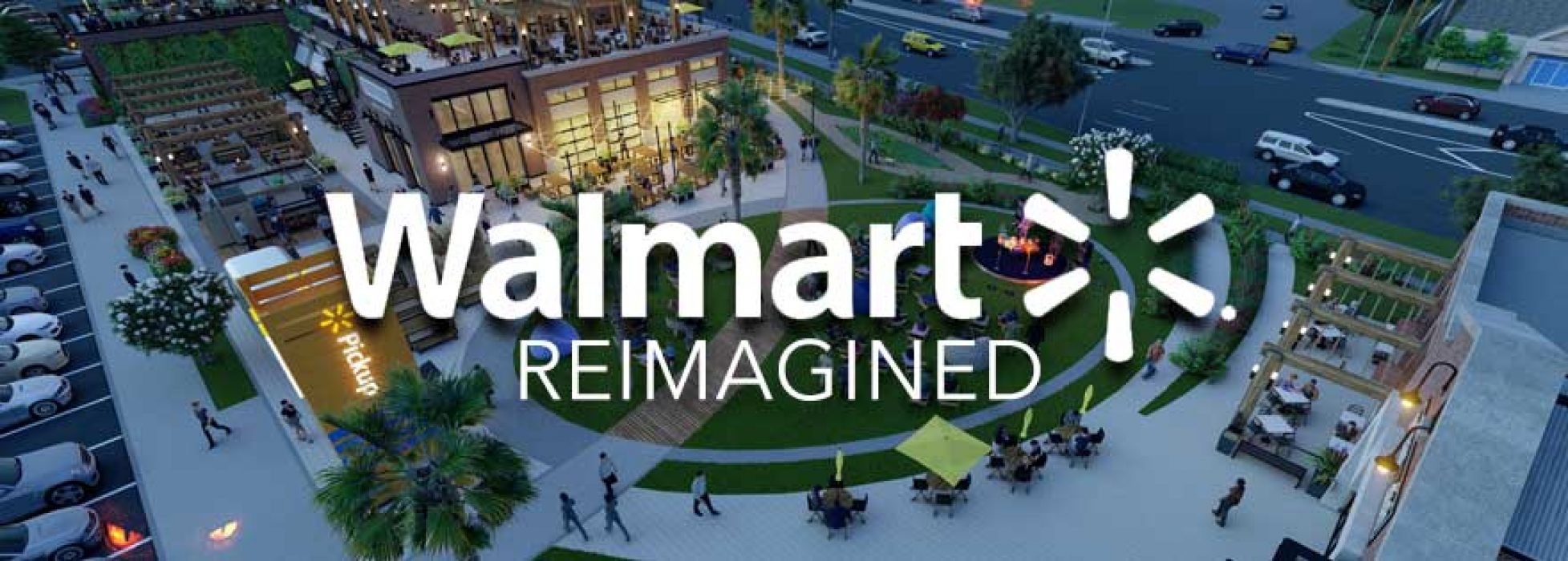Walmart -7 things the Middle Eastern retailers could learn.
Walmart is driving Retail innovation.
Walmart is the world’s largest company by revenue—over US$500 billion, according to Fortune Global 500 list in 2018—as well as the largest private employer in the world with 2.3 million employees across 6,363 stores. It is a publicly-traded family-owned business, as the company is controlled by the Walton family.
If these credentials are not enough to open your eyes…
let me tell you 7 things that the Middle Eastern retailers and Mall owners/landlords could learn from Walmart.
1) Size does not matter
Being a huge organization with millions of employees’ does not deter Walmart to take swift actions which result in Innovation and brings out innovative approaches to their retail offerings.
2) Collaborative Approach: Delivering growth
The Walmart team looked around and asked what else do their customers need?
How can Walmart enhance Customer Delight?
How can they embrace new technology and channels of distribution (e-commerce) to enhance their customer’s experience?
Can they attract more footfalls into their hypermarkets or malls if they change?
The deep-diving into these questions gave Walmart a completely new dimension to their business.
The answer was “Give people a place to gather, share, be entertained and feel good about Walmart”.
The result is the birth of “Walmart Reimagined”.
What is “Walmart Reimagined”?
Walmart Reimagined is a unique concept that follows the core principle of Walmart i.e. “Everyday low prices” i.e. finding cost-effective solutions to harsh realities.
Walmart innovated the utilization of their existing assets i.e. malls/shopping centers and its surrounding lands by converting their centers as town centers for the local communities.
The Town Center concept is part of an overarching strategy to bind Walmart deeper into the fabric of the nearly 5,000 U.S. communities it serves.

3) Becoming part of the community
They converted the ample empty parking lots as a place for community Get-togethers, play areas, areas for community events, play areas for family and kids, including skate parks, and walking and biking paths.
In addition “mobility hubs” are planned for bike rental, bus, taxi, and ride-share services.
Healthy food is also planned with spaces for local farmers’ markets, food trucks, food halls, and food chains.

4) Increasing focus on e-commerce
Since the purchase of online shopping giant Jet last year, Walmart has acquired other digital retailers like Mod cloth, Shoe Buy, Bonobos, and most recently Flipkart in India.
learn more about the business model of food delivery apps, click here.
5) Innovation:
Apart from the Innovative concept “Walmart Reimagined”, the retailer further capitalized on e-commerce by building a proprietary app that matches online delivery addresses
with employees’ driving routes home. Employees are incentivized to deliver online orders on their back home.
The result, an online grocery delivery that rivals Amazon and Whole Foods from more than 900 stores.
Check the video of 50 years of innovation by Walmart

6) Using data analytics to drive Customer’s delight:
Analytical expertise is the name of the retail game.
Data, when combined with intelligent technology, helps organizations create connected experiences in a fragmented environment.
Wal-Mart is equipped with its own powerful architecture that collects, analyzes, and integrates data to create a personalized, full customer view.
Wal-Mart’s goal is to bridge the gap between what customers do in-store and online to establish one seamless experience.
learn about lipstick as an economic indicator, click here.
7) Keep marketing simple
Get all messaging directly to the point and deliver accordingly.
The newly improved slogan says “Save Money. Live Better.” shoppers know that purchasing from them guarantees lower prices for better products.
Sam Walton once said while replying to a question from Press reporter:
“To succeed in this world, you have to change all the time.”
My personal learning from this quote, while change is never easy, those companies that adapt quickly have the best chance of survival.
I would like to end my article by asking the Middle Eastern Retail fraternity and Mall owners a simple question,
“Are you driving innovative growth to your existing projects/ malls/ shopping centers?”
If your answer is NO, (which I presume) then feel free to reach out to me for free advice.
References: Walmart Wikipedia, ICSC conference- Walmart keynotes, Business Insider & Forbes.
About the author:
Ritesh Mohan is a passionate retail professional with over 20 years in the Retail sector, handling some of the biggest brands in beauty, fashion, and fragrances retail & FMCG sector. Ritesh has been instrumental in the growth of some of the regional brands as well in the Middle East region. He specializes in Retail management, Product development, and Brand Management, Retail Operations, Sales Management and Franchising & Business Management. He strongly believes in empowering business owners with his wisdom & experience of around two decades in the industry.






3 Retail Trends & Brands to watch out in 2019 - Retail Ritesh
December 11, 2018 @ 6:53 am
[…] written a case study in my previous article on Walmart and Innovation which forms its core DNA. Click here in case you want to know more about […]